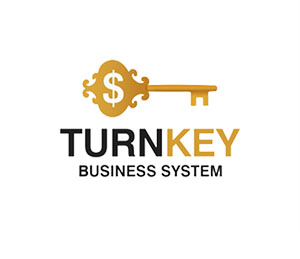
Automating Your Forex Trading
In the world of Forex trading, time is money.
The ability to execute trades quickly and efficiently can make the difference between profit and loss.
This is where trading robots, also known as Expert Advisors (EAs), come into play. These automated systems are designed to analyze the market, execute trades, and manage risk without human intervention.
But how do they work, and are they worth using? In this article, we’ll explore the ins and outs of trading robots, their benefits and drawbacks, and how to choose the right one for your trading strategy.
The ability to execute trades quickly and efficiently can make the difference between profit and loss.
This is where trading robots, also known as Expert Advisors (EAs), come into play. These automated systems are designed to analyze the market, execute trades, and manage risk without human intervention.
But how do they work, and are they worth using? In this article, we’ll explore the ins and outs of trading robots, their benefits and drawbacks, and how to choose the right one for your trading strategy.

Automating Your Forex Trading
What Are Trading Robots?
Trading robots are software programs that run on trading platforms like MetaTrader 4 (MT4) and MetaTrader 5 (MT5). They use predefined algorithms to analyze market conditions, identify trading opportunities, and execute trades automatically. EAs can be programmed to follow specific strategies, such as scalping, trend-following, or arbitrage, making them a versatile tool for traders.Key Features of Trading Robots:
Automation: EAs can trade 24/7 without human intervention.
Speed: They execute trades in milliseconds, capitalizing on market opportunities faster than manual trading.
Emotion-Free Trading: Robots eliminate emotional decision-making, ensuring consistency.
Backtesting: EAs can be tested on historical data to evaluate their performance.
How Do Trading Robots Work?
Trading robots operate based on a set of rules and algorithms. Here’s a step-by-step breakdown of how they work:Market Analysis
The robot scans the market for specific conditions, such as price movements, indicators, or patterns, that match its programmed strategy.
Signal Generation
Once the conditions are met, the robot generates a buy or sell signal.
Trade Execution
The robot automatically executes the trade, including setting stop-loss and take-profit levels.
Risk Management
The robot monitors the trade and adjusts parameters, such as trailing stops, to manage risk.
Performance Monitoring
The robot tracks the trade’s progress and closes it when the target is reached or the stop-loss is triggered.
Benefits of Using Trading Robots
Trading robots offer several advantages that make them appealing to traders:1. 24/7 Trading
Unlike humans, robots can trade around the clock, taking advantage of opportunities in different time zones.
2. Speed and Efficiency
Robots can analyze data and execute trades in milliseconds, ensuring you don’t miss out on fast-moving market opportunities.
3. Emotion-Free Trading
By removing emotions like fear and greed, robots ensure consistent and disciplined trading.
4. Backtesting and Optimization
Robots can be tested on historical data to evaluate their performance and optimize their strategies.
5. Diversification
You can run multiple robots simultaneously, each following a different strategy, to diversify your trading portfolio.
Drawbacks of Using Trading Robots
While trading robots offer many benefits, they also come with some drawbacks:1. Lack of Adaptability
Robots operate based on predefined rules and may struggle to adapt to sudden market changes or unexpected events.
2. Over-Optimization
Robots that are overly optimized for historical data may perform poorly in live markets.
3. Technical Issues
Robots rely on stable internet connections and trading platforms. Any technical glitches can lead to missed trades or losses.
4. High Costs
Some high-quality robots can be expensive, and there’s no guarantee they will be profitable.
5. Risk of Scams
The market is flooded with low-quality or fraudulent robots that promise high returns but fail to deliver.
How to Choose the Right Trading Robot
With so many options available, choosing the right trading robot can be challenging. Here are some factors to consider:1. Strategy
Choose a robot that aligns with your trading style and goals. For example, if you’re a scalper, look for a robot designed for high-frequency trading.
2. Performance
Evaluate the robot’s performance using historical data and live results. Look for consistent profitability and low drawdowns.
3. Customization
Ensure the robot allows for customization, so you can adjust parameters to suit your risk tolerance and market conditions.
4. Support and Updates
Choose a robot from a reputable provider that offers regular updates and customer support.
5. Cost
Consider the robot’s cost, including any subscription fees or profit-sharing arrangements, and weigh it against its potential returns.
Popular Trading Robots for MetaTrader
Here are some of the most popular trading robots for MT4 and MT5:Forex Flex EA
Known for its versatility, Forex Flex EA offers multiple strategies and customizable settings.
WallStreet Forex Robot
This robot is designed for conservative trading, focusing on low-risk, steady returns.
GPS Forex Robot
GPS Forex Robot uses a unique algorithm to identify high-probability trades.
FX Diamond EA
This robot combines scalping and trend-following strategies for optimal performance.
Gold Trading Robot
Specifically designed for trading gold, this robot capitalizes on the metal’s volatility.
Tips for Using Trading Robots Effectively
To get the most out of your trading robot, follow these tips:Start with a Demo Account
Test the robot on a demo account to evaluate its performance before using it with real money.
Monitor Performance
Regularly review the robot’s performance and make adjustments as needed.
Use Proper Risk Management
Set appropriate stop-loss and take-profit levels to protect your capital.
Stay Informed
Keep up with market news and events that could impact your robot’s performance.
Avoid Over-Reliance
While robots can be powerful tools, they should complement, not replace, your trading knowledge and skills.
The Future of Trading Robots
As technology continues to advance, trading robots are becoming more sophisticated. Here are some trends to watch:
Artificial Intelligence (AI)
AI-powered robots can analyze vast amounts of data and adapt to changing market conditions in real-time.
Machine Learning
Robots with machine learning capabilities can improve their performance over time by learning from past trades.
Integration with Other Tools
Future robots may integrate with analytics tools, news feeds, and social trading platforms to enhance their decision-making capabilities.
Increased Accessibility
As technology becomes more affordable, trading robots will become accessible to a wider range of traders.
Conclusion: Are Trading Robots Worth It?
Trading robots offer a powerful way to automate your Forex trading, providing speed, efficiency, and consistency. However, they are not a magic solution and come with their own set of challenges. To succeed with trading robots, you need to choose the right one, use proper risk management, and stay informed about market conditions.Whether you’re a beginner or an experienced trader, trading robots can be a valuable addition to your toolkit. By leveraging their strengths and mitigating their weaknesses, you can enhance your trading performance and achieve your financial goals.
So, are trading robots worth it? The answer depends on how you use them. With the right approach, they can be a game-changer for your trading journey.
#Forex #TradingRobots #MetaTrader #AutomatedTrading









Report
My comments